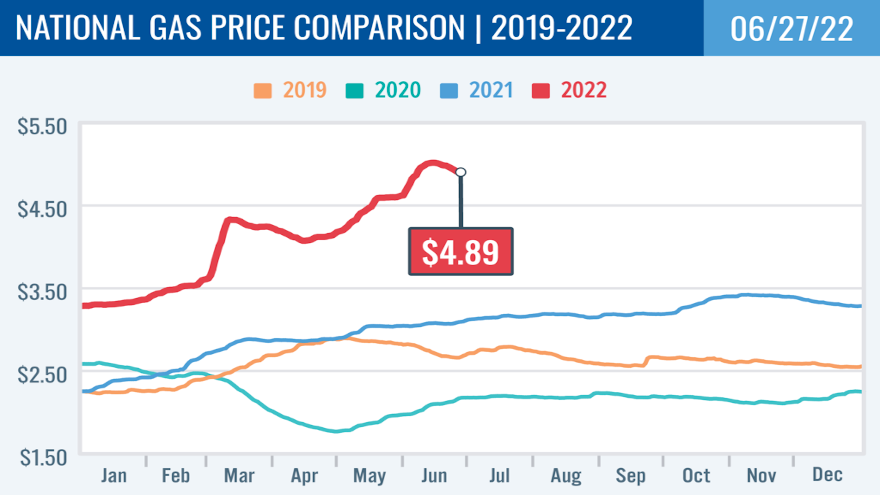Gas prices pinch Fourth of July driving expectations

Chart courtesy of AAA.
Perhaps your service drive has been busy this week with oil changes, tire rotations and other routine maintenance ROs. However, if your service bays have been open for stretches of the day, a new survey by Cars.com might show part of the reason why.
The Cars.com survey highlighted that while 88% of American travelers plan to drive to their holiday destinations over Independence Day weekend, more than three-fourths say record-high gas prices have impacted plans, with many opting to stay closer to home or bring friends along to help chip in at the pump.
Distance is the predominant sacrifice.
More than half of those surveyed say they’ll be driving a shorter distance due to fuel costs, and while 62% of 2021 respondents said their goal was to get “as far from the house as possible” last Fourth of July, this year, 68% of road trippers will stay within 50 miles of home.
Continuing a Memorial Day travel trend, Cars.com said 45% of Fourth of July travelers will bring company along to offset the cost of gas, and the number surpasses 50% for those between 18-34 and those with a household income below $50,000.
“Road tripping for the Fourth of July is an American tradition, and understandably, gas prices are at the forefront of any road tripper’s mind right now. Pent-up demand for travel is pushing vacationers to get creative with their road-trip strategies to curb costs rather than forgo their adventures completely,” Cars.com editor in chief Jenni Newman said in a news release.
Meanwhile, according to a new survey by Personal Capital and Empower, 55% of millennials are spending more time planning for vacations than retirement.
It’s all happening as a drop in the global price of oil helped the national average for a gallon of gas to fall for a second week to land at $4.89.
AAA said economic fears of a potential global recession leading to less demand for oil dropped the price to around $107 per barrel, down from $110 last week.
“Fear is not a good reason to move a market like the one for oil, but it is a powerful motivator,” AAA spokesperson Andrew Gross said in another news release. “The cost of oil accounts for nearly $3 for every $4.89 at the gas pump. Consumers should find more relief when fueling up if oil prices drop further.”
AAA noted that a vital gas price indicator was unavailable for this week’s report. The U.S. Energy Information Administration (EIA) said it was delaying the release of gasoline demand data because of “systems issues.”
AAA said, “Demand is a sign of whether motorists are fueling up or not, which in turn may be reflected in higher or lower pump prices.”
AAA mentioned the current national average of $4.89 is nine cents less than a week ago, 30 cents more than a month ago, and $1.80 more than a year ago.

 View The Latest Edition
View The Latest Edition

